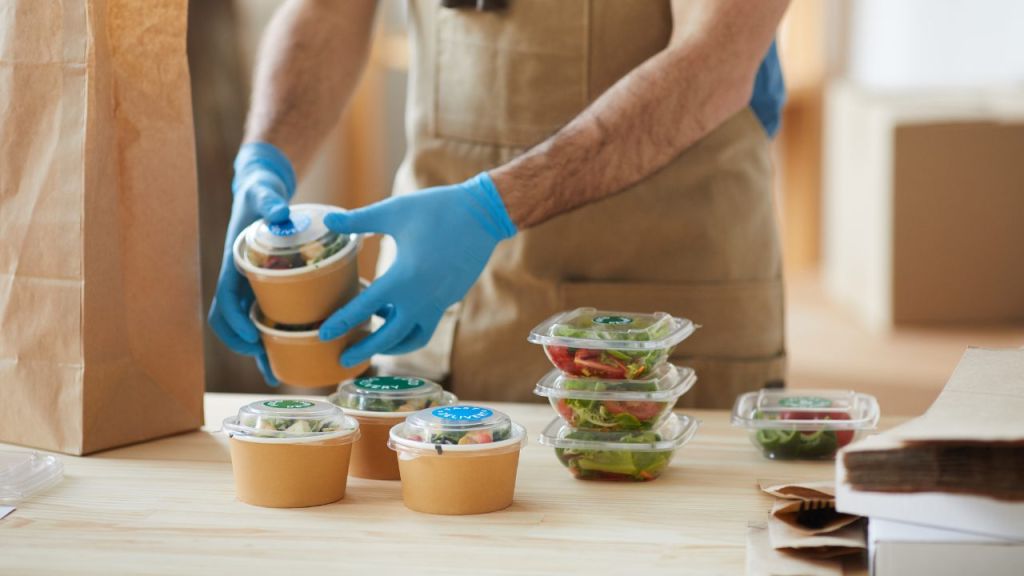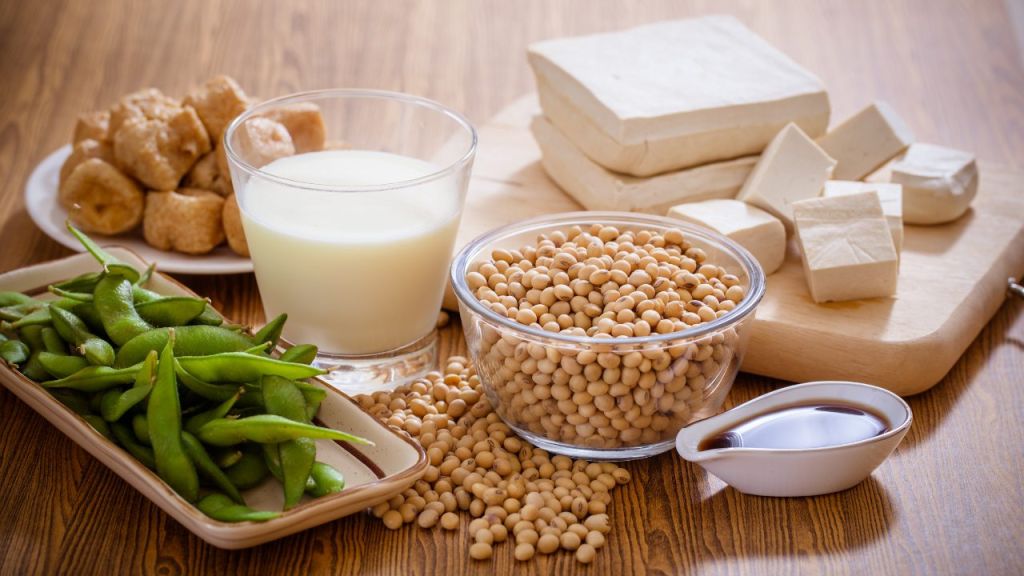You know that nagging feeling you get when you take the first bite of a meal that makes your eyes roll back in ecstasy? That tingling sensation when flavors explode on your tongue in perfect harmony? Well, it’s time to spread that joy by launching your own online food business from home. Sure, there are risks like dodgy suppliers, food poisoning lawsuits, and having your life’s passion smell like fermented soybeans.
But if you follow this handy guide to navigate the messy world of food startups, your next batch of business cards can say “CEO” instead of “line cook who sometimes finds Band-Aids in the coleslaw.” Your glazed donuts and pad Thai burritos await. Let’s get cooking!
1. Research food laws

You’ll want to bone up on health department regulations before you start slinging snacks unless you fancy surprise inspections and hefty fines. Each state has its own rules for cottage food operations, so check with your local health department to see what’s allowed. If they give the green light, you’re good to go as long as you follow a few food safety guidelines.
Just be glad you’re not making anything “potentially hazardous” like meat or dairy, which require a commercial kitchen and mounds of paperwork. While the rules aim to protect public health, for small operators they can be a real buzzkill.
But look on the bright side – at least you get to avoid hairnets! Once you’ve navigated the red tape, you’ll be rewarded with the freedom to create artisanal edibles from your own home. How’s that for having your cake and eating it too?
2. Find your niche

So you want to start an online food business? First things first, figure out what edible delight you want to peddle. With countless options, it can feel overwhelming. But think back to what your weird uncle Terry always said at Thanksgiving: “You gotta go niche or go home!” Terry was onto something. In this crowded market, a niche is key.
Maybe you craft artisanal dog biscuits, vegan cheese boards, or low-carb pasta alternatives. Whatever you choose, make it specific. Keep your quirky uncle’s sage advice in mind as you narrow down your options. The more tailored your product is to a target customer, the more those hungry hipsters will eat it up! Once you’ve selected your scrumptious specialty, build out your business plan.
Map how you’ll create buzz, gain customers, and scale. But take it slow – there’s no need to go full-scale factory farm right away. Start by selling at local markets or online to test the waters. As demand grows, you can evaluate the next steps to get your goods in more mouths and turn your niche into a thriving enterprise. The path to food fame may be messy, but with the right recipe for success, you’ll be cooking!
3. Decide on a business model: produced vs. curated
You’ve got two options here: become a producer or a curator. As a producer, you’ll create your own tasty treats to sell online. This means handling food costs, production, and all the red tape that comes with it. But you’ll reap the rewards of higher profit margins and building a brand around your creations.
Curating, on the other hand, means selling other people’s goods on your site. Less hassle, but you’ll make a smaller cut of sales. Many curated food sites focus on artisanal, locally-made, or hard-to-find products. You can even combine models, producing some items and curating complementary products from others.
The choice comes down to how much time and money you want to invest, and how much control you need over your inventory. As a producer, you call the shots but shoulder more responsibility. As a curator, you can get started quickly but rely on others to supply your goods.
Either way, make sure you’ve got a solid business plan in place. Know your costs, target customers, and marketing strategy before diving in. Starting an online food business is challenging enough without going in blind! But with passion, perseverance, and a little luck, you’ll be well on your way to feeding happy customers in no time.
4. Source ingredients
Sourcing quality ingredients is key to any food business’ success. Unless you plan to grow everything yourself (good luck), you’ll need to find suppliers you can trust. Farmers markets are great for connecting with local producers, but for larger orders, you’ll want wholesale suppliers.
Scan industry sites and ask fellow foodpreneurs for recommendations. Once you’ve found some contenders, grill them like a porterhouse to make sure their ingredients are fresh, sustainably, and ethically sourced. If they hedge or get cagey, move on. Your customers deserve the best, and there are plenty of suppliers who will happily provide details about their practices and partners.
When you do find “the one(s),” get samples before committing to a big order. Make test batches, conduct taste tests, and ensure the ingredients suit your needs. The last thing you want is 500 pounds of subpar produce arriving at your door. Unless you’re aiming to launch an online composting service, in which case, well played.
Jokes aside, sourcing is serious business. Take your time, ask lots of questions, and don’t settle for “good enough.” Your ingredients are the foundation of your brand. Choose wisely, and your customers will thank you. Fail to vet properly, and you may find your business on shaky ground before it’s even begun.
5. Determine your food production model
So you have a killer recipe or food concept—now you need to figure out how to actually produce it. Do you want to handle production yourself or outsource it? Making it yourself means more control but also more work. Outsourcing production to a co-packer frees up your time but may limit customization.

If you go the co-packing route, find a producer that specializes in your type of food and will follow your recipe to a T. After all, your brand’s success depends on consistency and quality. Just make sure they’re properly licensed and insured. You don’t want some rogue bacteria hitching a ride in your product.
Producing the food yourself requires a commercial kitchen, equipment, and staff. But you’ll have full control over your process and can easily adapt to trends or customer feedback. You’ll need the proper permits and licenses, of course, unless you want the health department crashing your party.
Whichever model you choose, start small and build up. It’s easy to get overwhelmed when demand exceeds your wildest dreams. Focus on doing one thing exceptionally well before expanding into new products or markets. With hard work and patience, you’ll be raking in the dough (and pickles) in no time.
6. Build your brand
Congratulations, your online food business now has a name and a product. But how will customers find you in the vast sea of Instagram food porn and Facebook cooking videos? Time to flex those creative muscles and build an irresistibly delicious brand.
Craft a visual identity that makes mouths water just looking at it. Professional photos of your drool-worthy dishes, a stylish logo, and a cohesive social media feed will have customers clicking “Follow” faster than you can say “nom nom.” Next, create shareable content to spread the word about your scrumptiousness. Post behind-the-scenes stories of your culinary adventures, share recipes and tips, or start a video series. Engage with your followers by replying to their comments and messages.
Once you’ve built up hype, get your goods in front of as many eyeballs as possible. Contact influencers and ask them to review and promote your products. Pitch yourself as a guest on podcasts, TV shows, and news segments. Host pop-up events and tastings in your area. Run social media contests and giveaways to increase buzz.
With time and dedication, you’ll have hungry fans eagerly awaiting your next morsel. Now get out there, spread the word about your delicious brand, and serve up something irresistible!
7. Price your food products
You’ve spent hours slaving over a hot stove perfecting your recipes, so you’d better not sell yourself short when pricing your goods. Sure, you want your treats to fly off the virtual shelves, but not if it means working for peanuts.

Calculate your costs first. Tally up what you shell out for ingredients, packaging, and shipping. Don’t forget the cost of your time. If you’re doing this as a side hustle in your off hours, you’re not some indentured servant. Pay yourself a decent wage.
Check your competitors’ prices for similar products. You don’t want to be the cheapo of the group, but you can’t gouge customers either. Find the sweet spot right in the middle.
Consider your target customers and their budgets. If you’re selling artisanal goat cheese, you can likely charge a premium. If it’s classic chocolate chip cookies, keep prices reasonable. People will pay more for quality and uniqueness, so focus on what makes your food extra special.
Don’t be afraid to start on the higher end of your price range. You can always lower prices, but raising them risks annoying your customers. And keep some budget-friendly options in your lineup so you don’t alienate any potential buyers.
With the right price points, your online food business will be making dough in no time. But not the kind you can eat! Ba dum tss! Sorry, couldn’t resist a little food humor. My jokes may be stale, but your products will be fresh.
8. Set up inventory management
So you’ve got your permits in order and recipes finalized—now comes the fun part, right? Not quite. Before you start pumping out delectable delicacies, you’ll need to get a handle on managing your supplies. Tracking inventory is the unsexy side of running a food biz, but do it wrong and you’ll end up with expired ingredients or—worse—run out of a key component mid-batch.
Don’t just jot down what’s in your pantry on the back of an old grocery list. Set up a proper inventory system to log what’s coming in and going out. A digital spreadsheet is ideal for staying on top of expiry dates and reorder points so you always have enough supplies on hand to satisfy customers without ending up with excess waste. It may feel tedious, but diligent inventory management is what separates fledgling food entrepreneurs from those building a sustainable business.
Keeping close tabs on your stocks also allows you to spot any quality issues early. As any pickle peddler who’s had a batch ruined by airborne bacteria can attest, it’s better to catch problems before they end up in customers’ hands (and mouths).
An ounce of prevention is worth a pound of cured cucumbers. While running a food business from home has its perks, don’t let inventory slip through the cracks. Staying on top of supplies today means your customers will keep coming back for seconds tomorrow.
9. Plan for growth and product development
Now that you’ve got a loyal following gobbling up your grub, it’s time to think big. Dream of walking into grocery stores and seeing your products on shelves, or imagine your online store crashing from the influx of orders. Unless you plan to keep your business small, you’ll need to scale up. But growing too quickly can be deadly, so take it slow.
Start by improving your processes. Maybe buy machines to boost production or hire a few eager interns to help with social media and fulfillment. Don’t go overboard though, or you’ll end up with more expenses than sales and drown in debt. Focus on efficiency over rapid expansion.
Once you’ve streamlined operations, develop new products to keep customers hooked. But be cautious, foodies can be fickle. Test the waters with small batches and surveys before mass producing. The last thing you need is a warehouse full of dud goods that no one will buy.
Growth and product expansion seem exciting but do it carefully. Scale up steadily, improve systems, get feedback, and never stop focusing on quality. Do that and world domination will come, one delicious bite at a time.
10. Set up shipping
Now for the not-so-fun part: logistics. If you thought navigating health codes was tricky, just wait until you enter the wild world of shipping food products. The good news is, you have options. The bad news is, that none of them are cheap or easy.

First, you’ll need to determine if your product is shelf-stable or perishable. If it’s the latter, you’ll require refrigerated shipping to avoid turning your customers’ eagerly-awaited treats into bacterial breeding grounds. Cue the cha-ching of invoices for expensive cold packs and insulated packaging.
For shelf-stable goods, you can use regular ground shipping. But don’t be surprised if a single jar of your artisanal apricot jam costs $8 to ship across the country. Shipping rates are brutal, so build the cost into your product price or offer a shipping discount for larger orders.
If you want to keep costs down, you can offer in-person pickup for locals. Just make sure your house doesn’t end up on some “best new food spots in the neighborhood!” list, or you’ll have a line of hungry hipsters down the block. In that case, you may need to find shared commercial space (watch out for rogue tofu spores!) or work with a fulfillment center.
However you choose to ship, be very clear about perishability and include handling instructions. The last thing you need is a one-star review complaining that your world-famous kimchi arrived as a bag of mush. Starting a food business is hard work, but with some strategic shipping solutions, you’ll have customers happily receiving their orders in no time. Hopefully without any surprise additions. We see you, tofu spores!
11. Choose your sales channels
So you’ve got your permits in order and a killer product ready to ship—now comes the fun part. How will you get your grubby little mitts on customers’ hard-earned dough?
Unless you’re slinging high-end truffles, you’ll want to cast a wide net. Sign up for every third-party marketplace under the sun, like Uber Eats or Etsy. Yeah, their fees sting, but think of them as matchmakers facilitating torrid romances between you and customers.
Sure, you could try to go it alone with your own website, but do you really want to bet the farm on fickle Google sending search traffic your way?
For maximum exposure, launch on multiple channels at once. Your sassy social media accounts should drive traffic to your marketplace listings and website. And don’t forget pop-up events, local retailers, or even food trucks. Any way to get samples in people’s mouths is fair game.
The key is testing different options to find what sticks. Keep tweaking and optimizing, and soon enough you’ll have more orders than you can shake a spatula at. But isn’t that the dream? Now get out there, you saucy entrepreneur, and spread the food love!
12. Market your food business
You’ve crafted artisanal morsels to make mouths water, but now comes the tricky part—convincing people to actually buy your grub. Marketing a food business is like a bad first date: awkward, uncertain, and often expensive. But don’t lose hope! With some savvy social skills and a sprinkle of salesmanship, you’ll have customers eating out of your hand in no time.

Launch a slick website showcasing food porn-worthy photos of your fare. Curate an Instagram that’s vibrant, visual, and reflects your brand’s personality. Run social media ads targeting folks with appetites as big as their wallets. Send samples to influential food bloggers and beg for a review. Sponsor local events to get in front of your peeps. Offer promotions and deals to lure in new customers.
While it may feel futile at first, stick with it. Building a loyal customer base, like a good marinara sauce, takes time. But with consistency, quality, and patience, you’ll cultivate a devoted following and a thriving food business. Now, about that second date…anyone hungry?
Which Food Business is Most Profitable?
So you want to start a food business but can’t decide which tasty path to take? While cupcakes and cronuts seem scrumptious, they’re a dime a dozen these days. For the savvy foodpreneur, the real dough is in the niche.
Consider going gluten-free, vegan, or paleo. Health-conscious eaters will fork over major moolah for artisanal nut butter, plant-based proteins, or grain-free granola. If you source quality ingredients and come up with a clever brand, you’ll be rolling in the granola…and the money.
Or maybe ethnic cuisine is calling your name. Authentic tamales, pho, or arepas are always in demand and allow you to corner an underserved market. You’ll build a loyal following from homesick expats and culinary explorers hankering for the real deal.
While the options may seem endless, do your homework before diving in. Study your competition, costs, and legal requirements. Choose a concept that ignites your passion and aligns with your skills. With hard work and the right recipe, you’ll be well on your way to entrepreneurial bliss and a very profitable food business. Bon appetit!
What are The Best Food Products to Sell?
So you want to start an online food business but can’t decide what to sell? Join the club. With endless options, it’s tricky to narrow it down. But fret not, we’ve got you covered. Some of the tastiest choices:
Baked goods – If you’ve got mad skills with a whisk and oven, selling cupcakes, cookies or artisanal bread is a sweet gig. People will fork over the major dough for quality carbs. But make sure you follow food law to a T unless you fancy fines with your frosting.
Condiments and sauces – Whether you make a mean hot sauce, sell gourmet olive oil or craft artisanal vinegar, bottled goods have a long shelf life and loyal following. Just avoid setting up shop near any tofu factories. The bacteria can be killer on your inventory.
Coffee and tea – For the caffeine-inclined, selling specialty java, loose-leaf tea or related accessories is piping hot right now. Everyone needs their daily grind, so you’ll have repeat customers in droves.
Meal kits – For home cooks seeking convenience, meal kits with pre-portioned ingredients are ideal. Curate recipes, source quality goods, and package them into kits. Your customers will be whipping up gourmet fare in no time. But managing perishables requires meticulous planning lest you end up with rotting veggies.
Snacks – From protein bars and granola to trail mix and jerkies, savory and sweet snacks have major appeal. People are always noshing, so selling snacks is a very “munchie” business. Watch your margins though, ingredient costs can be high.
Selling any of these delicious goods online is sure to satisfy your entrepreneurial appetite. Just remember, while the food industry may seem all sugar, spice, and everything nice, it comes with extra responsibilities. Follow regulations, manage waste, market like a pro, and soon you’ll be cooking up a successful business!
Conclusion
So there you have it, a budding entrepreneur. You can start that food biz of your dreams without leaving your kitchen. Just remember to sanitize those counters and keep the pet hair out of the batters. We believe in you! With this guide under your apron, you’ll be slinging donuts, dishing dumplings, and selling soufflés in no time. The world is ready for your signature sweet and savory creations. Now get out there and feed the people!
Read More : How to Optimize Your Website for Bing in 2024: My Secret
 Oko Dot All In One Technology Solutions By Likhon Hussain
Oko Dot All In One Technology Solutions By Likhon Hussain
